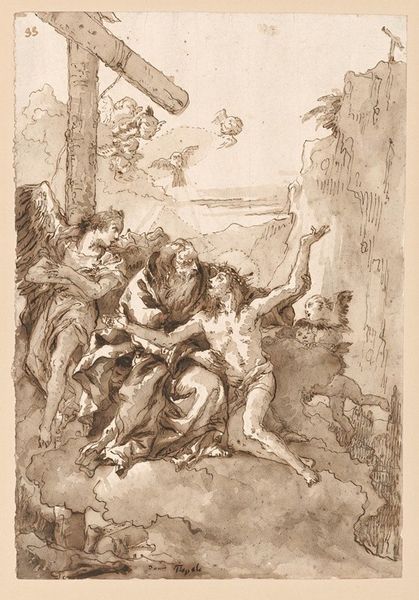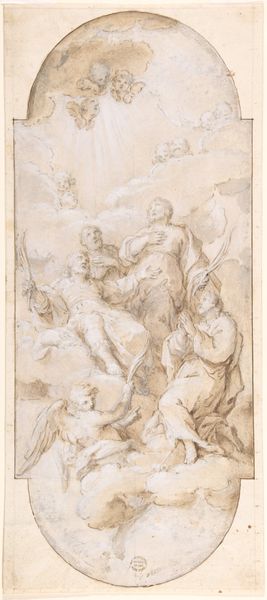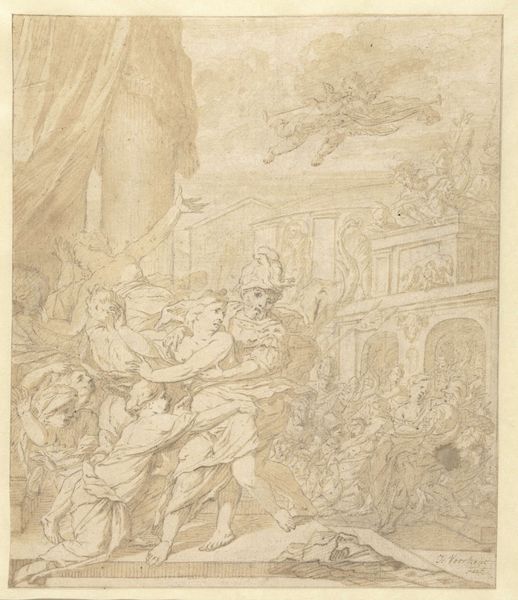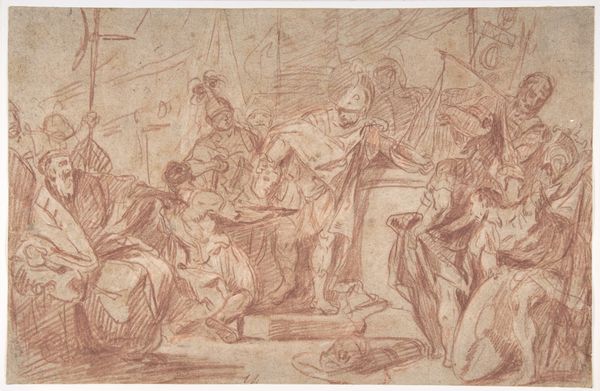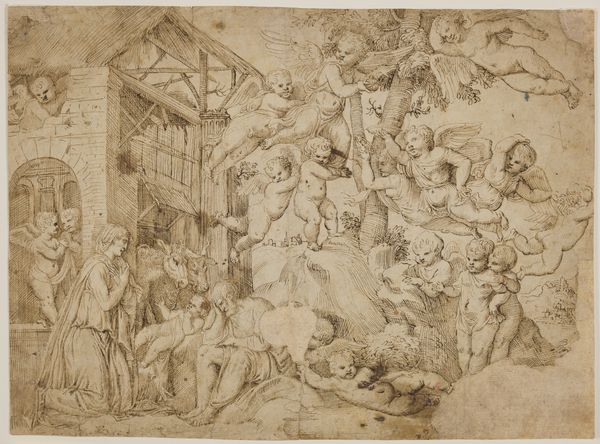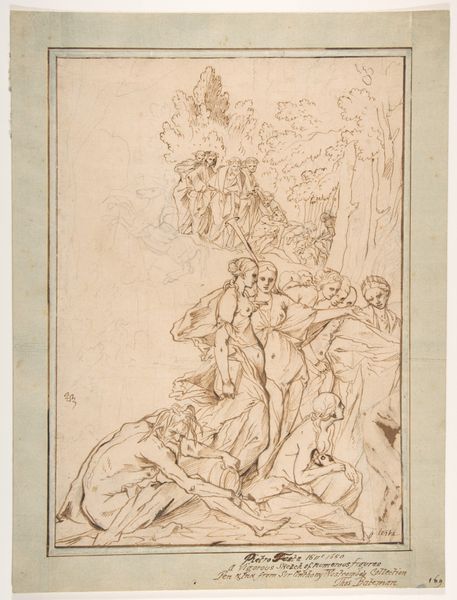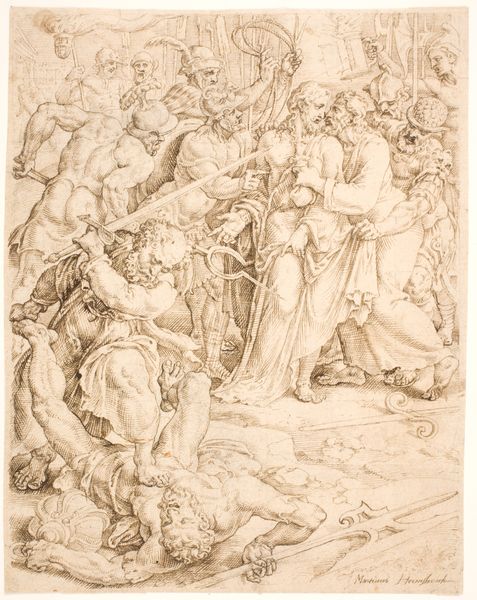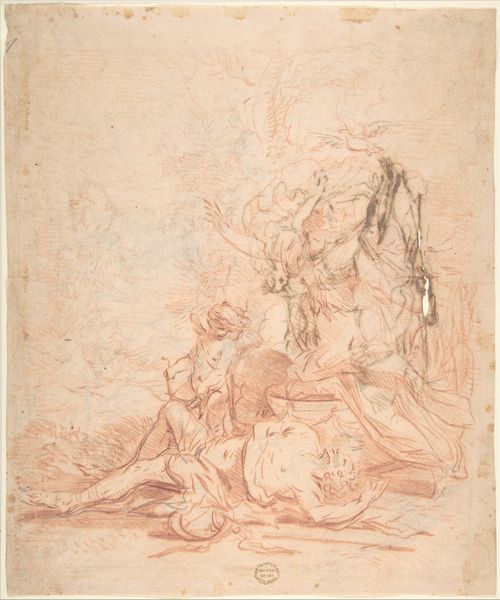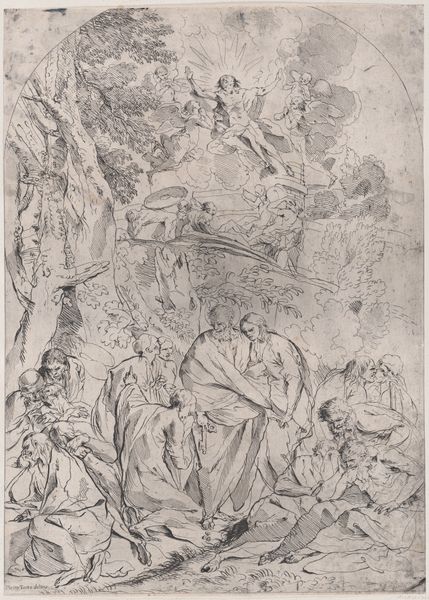
drawing, charcoal
#
portrait
#
drawing
#
charcoal drawing
#
figuration
#
11_renaissance
#
charcoal
#
history-painting
#
academic-art
#
charcoal
Dimensions: height 245 mm, width 187 mm
Copyright: Rijks Museum: Open Domain
This early 16th-century drawing, 'Bewening van Christus,' by Aertgen Claesz. van Leyden, is made with pen in brown ink on paper, a relatively inexpensive material. The artist's intentional use of line as a primary means of construction results in a dynamic composition, the thin lines allowing the artist to build up a range of tones and textures, from the smooth skin of Christ to the rough bark of the trees. Van Leyden seems less interested in the precise rendering of textures, and more interested in conveying a sense of dynamism and emotional expression. Look at how Van Leyden uses hatching and cross-hatching to create the illusion of depth and shadow. In the 16th century, the availability of paper and ink was increasing, facilitating the rise of drawing as a primary form of artistic expression. The artist relies on the inherent qualities of the materials to convey a powerful and moving scene. By focusing on materials, processes, and social context, we can gain a deeper understanding of this artwork, challenging the traditional distinctions between fine art and craft.
Comments
No comments
Be the first to comment and join the conversation on the ultimate creative platform.
